-
 Bitcoin
Bitcoin $96,840.9443
0.58% -
 Ethereum
Ethereum $1,833.9893
-0.06% -
 Tether USDt
Tether USDt $1.0004
0.01% -
 XRP
XRP $2.2190
-0.77% -
 BNB
BNB $598.9344
-0.89% -
 Solana
Solana $150.7358
-0.73% -
 USDC
USDC $1.0000
-0.02% -
 Dogecoin
Dogecoin $0.1815
1.94% -
 Cardano
Cardano $0.7104
1.19% -
 TRON
TRON $0.2457
-1.15% -
 Sui
Sui $3.4570
-6.80% -
 Chainlink
Chainlink $14.6363
-1.89% -
 Avalanche
Avalanche $21.2915
-0.53% -
 Stellar
Stellar $0.2770
-0.67% -
 UNUS SED LEO
UNUS SED LEO $8.8769
-0.82% -
 Shiba Inu
Shiba Inu $0.0...01351
-0.46% -
 Toncoin
Toncoin $3.1874
-0.65% -
 Hedera
Hedera $0.1858
-1.53% -
 Bitcoin Cash
Bitcoin Cash $370.7921
0.30% -
 Hyperliquid
Hyperliquid $20.5704
-1.30% -
 Litecoin
Litecoin $88.4349
2.15% -
 Polkadot
Polkadot $4.1932
0.22% -
 Dai
Dai $1.0000
-0.02% -
 Monero
Monero $287.1426
5.89% -
 Bitget Token
Bitget Token $4.3947
0.12% -
 Ethena USDe
Ethena USDe $1.0009
0.04% -
 Pi
Pi $0.5977
-2.54% -
 Pepe
Pepe $0.0...08697
-3.52% -
 Aptos
Aptos $5.4640
-0.71% -
 Uniswap
Uniswap $5.2572
-2.33%
Virtual currency wallet address registration
Reputable virtual currency wallet providers offer secure and accessible platforms for managing your funds, emphasizing strong passwords, additional security measures, and identity verification.
Jan 11, 2025 at 06:55 am
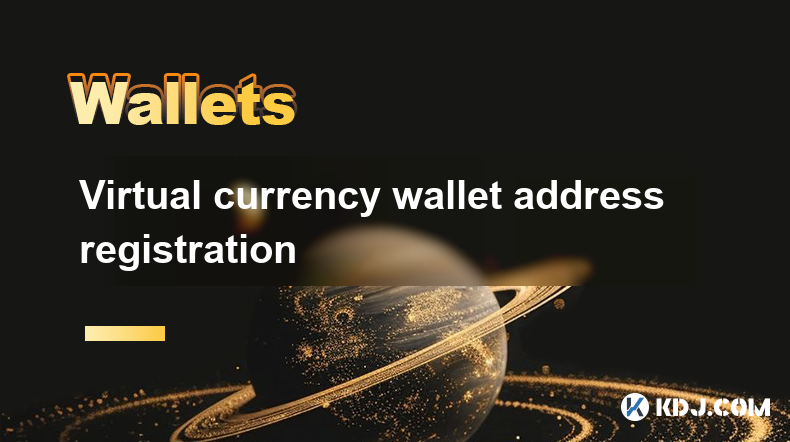
Virtual Currency Wallet Address Registration: An Ultimate Guide
Key Points:
- Step 1: Choose a Reputable Virtual Currency Wallet Provider
- Step 2: Download and Install the Wallet
- Step 3: Set Up a Strong Password and Additional Security Measures
- Step 4: Generate a Virtual Currency Wallet Address
- Step 5: Verify Your Identity
- Step 6: Deposit Funds
Article Content:
Step 1: Choose a Reputable Virtual Currency Wallet Provider
The choice of wallet provider is crucial for the security and accessibility of your funds. Consider the following factors:
- Reputation: Research online reviews and industry experts to identify providers with a proven track record of reliability and security.
- Features: Evaluate the wallets' capabilities, such as support for multiple cryptocurrencies, advanced security features, and user-friendly interfaces.
- Fees: Compare the transaction fees and maintenance charges associated with different providers to optimize your costs.
- Regulation and Compliance: Verify if the provider operates in compliance with applicable regulations and adheres to industry best practices.
Step 2: Download and Install the Wallet
- Download the wallet software from the official website of your chosen provider. Do not download from third-party sources to avoid malware or phishing scams.
- Install the software on your preferred device, adhering to the instructions provided by the provider.
Step 3: Set Up a Strong Password and Additional Security Measures
- Create a strong and unique password that is not associated with any other online accounts.
- Enable two-factor authentication (2FA) to add an extra layer of security, requiring confirmation from a trusted source, such as a mobile phone, when accessing the wallet.
- Consider using a hardware wallet, which provides enhanced security by storing your private keys offline.
Step 4: Generate a Virtual Currency Wallet Address
- Each wallet provider has its unique process for generating a wallet address. Follow the instructions provided within the wallet interface.
- A wallet address typically consists of a long string of alphanumeric characters and is specific to each cryptocurrency.
Step 5: Verify Your Identity
- Some wallet providers require identity verification to comply with anti-money laundering and know-your-customer (KYC) regulations. The process usually involves providing personal information, such as a government ID and proof of residence.
- This step helps prevent fraud and ensures the security and integrity of the platform.
Step 6: Deposit Funds
- Once your wallet is set up and verified, you can deposit funds. Follow the wallet's instructions to initiate a transaction from an external source, such as a cryptocurrency exchange or another wallet.
- Provide the recipient wallet address and the amount you wish to transfer.
- The transaction may take some time to process, depending on the cryptocurrency and network conditions.
FAQs:
1. What is a virtual currency wallet address?
A virtual currency wallet address is a unique alphanumeric string that identifies your wallet and facilitates the receipt and sending of cryptocurrencies.
2. How do I protect my virtual currency wallet address?
Secure your wallet with a strong password, enable 2FA, and consider using a hardware wallet for enhanced security. Avoid sharing your wallet address or private keys publicly.
3. Can I use the same virtual currency wallet address for different cryptocurrencies?
No. Each cryptocurrency has its own unique wallet address format, and you cannot store different currencies in the same address.
4. What happens if I lose my virtual currency wallet address?
If you lose access to your wallet address, you may not be able to recover your funds. It is essential to back up your wallet securely and keep it safe.
5. How can I verify my identity for a virtual currency wallet?
The verification process varies depending on the provider. Typically, you will need to provide personal information and upload supporting documents for review.
Disclaimer:info@kdj.com
The information provided is not trading advice. kdj.com does not assume any responsibility for any investments made based on the information provided in this article. Cryptocurrencies are highly volatile and it is highly recommended that you invest with caution after thorough research!
If you believe that the content used on this website infringes your copyright, please contact us immediately (info@kdj.com) and we will delete it promptly.
- StakeStone (STO) Airdrop Now Live: Get Free Tokens by Holding BNB
- 2025-05-02 21:35:13
- This Week in Crypto: Bitcoin Tests $97,000, Sui Pokémon Collaboration Rumors, ProShares XRP ETF Delayed
- 2025-05-02 21:35:13
- Arctic Pablo Shines as the Best Crypto to Invest in 2025, While Celestia and Terra Classic Hold the Line
- 2025-05-02 21:30:13
- MIND of Pepe Protocol Prepares to Double Down on the AI Agent Crypto Hype
- 2025-05-02 21:30:13
- By Francisco Rodrigues (All times ET unless indicated otherwise)
- 2025-05-02 21:25:12
- These 3 meme coins are rising this week as fears about the US-China trade war soften
- 2025-05-02 21:25:12
Related knowledge
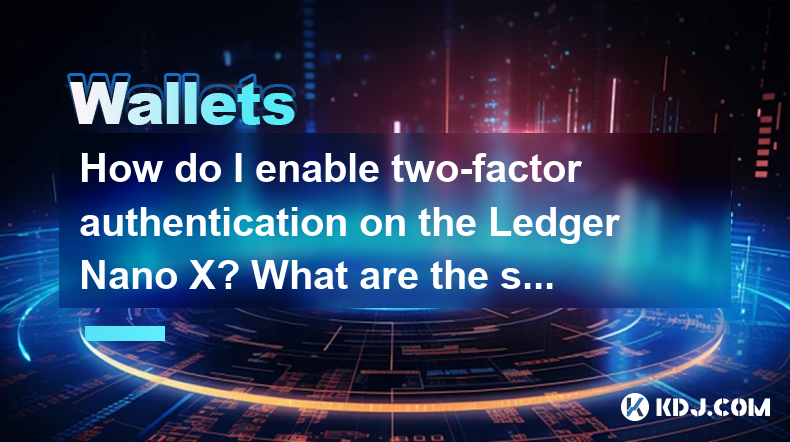
How do I enable two-factor authentication on the Ledger Nano X? What are the security options?
May 02,2025 at 09:49pm
Enabling two-factor authentication (2FA) on your Ledger Nano X is a critical step in securing your cryptocurrency assets. The Ledger Nano X offers robust security options that enhance the protection of your digital wealth. In this article, we will guide you through the process of enabling 2FA on your Ledger Nano X and explore the various security featur...
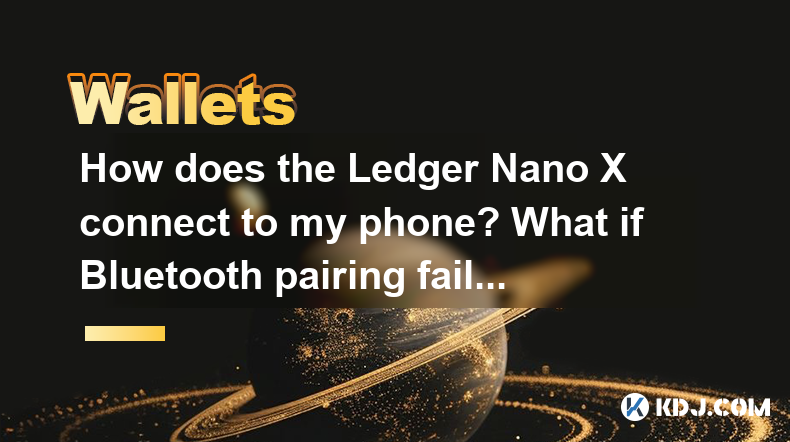
How does the Ledger Nano X connect to my phone? What if Bluetooth pairing fails?
May 02,2025 at 07:07pm
The Ledger Nano X is a popular hardware wallet designed to securely store your cryptocurrency. One of its key features is the ability to connect to your smartphone via Bluetooth, allowing for a seamless and convenient user experience. In this article, we will explore how to connect your Ledger Nano X to your phone and what to do if Bluetooth pairing fai...

How do I update the Ledger Nano X firmware? What if the update fails?
May 02,2025 at 06:00am
Updating the firmware of your Ledger Nano X is an essential process to ensure that your device remains secure and fully functional. The Ledger Nano X is a popular hardware wallet used for storing various cryptocurrencies safely. In this article, we will guide you through the step-by-step process of updating the firmware, and we will also address what to...

Why did the Exodus transaction fail? What to do if the network is congested?
May 02,2025 at 08:21am
Understanding the Exodus Transaction FailureWhen using the Exodus wallet to send cryptocurrencies, users may occasionally encounter transaction failures. The primary reasons for these failures include insufficient funds, incorrect recipient addresses, and network congestion. Insufficient funds occur when the wallet balance is lower than the transaction ...
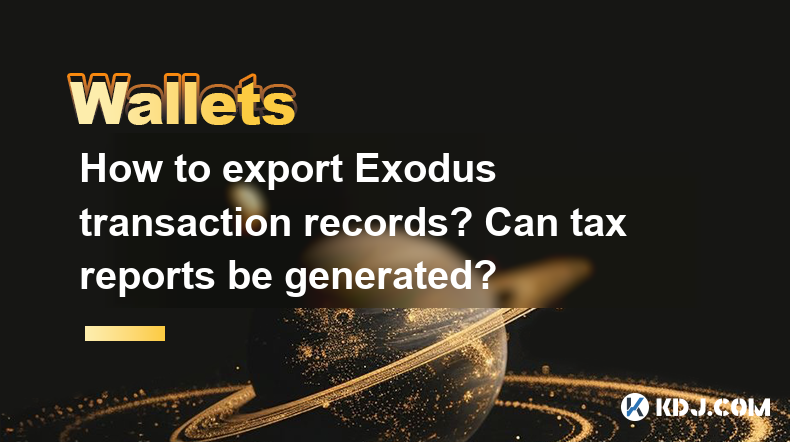
How to export Exodus transaction records? Can tax reports be generated?
May 02,2025 at 02:21am
Introduction to Exodus and Transaction RecordsExodus is a popular multi-currency wallet that allows users to store, manage, and exchange various cryptocurrencies. One of the essential features for users is the ability to track and export transaction records. This is crucial for maintaining accurate financial records and for tax purposes. In this article...
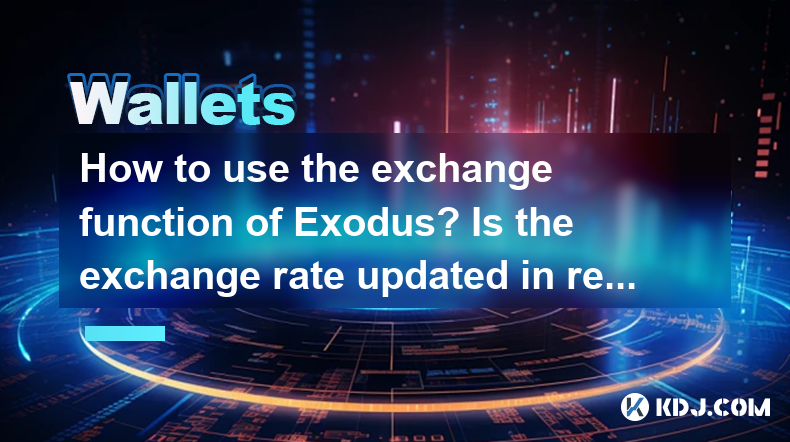
How to use the exchange function of Exodus? Is the exchange rate updated in real time?
May 02,2025 at 06:35am
Exodus is a popular cryptocurrency wallet that offers a user-friendly interface and a variety of features, including the ability to exchange cryptocurrencies directly within the wallet. This article will guide you through the process of using the exchange function in Exodus and answer the question about the exchange rate updates. Understanding the Excha...

How do I enable two-factor authentication on the Ledger Nano X? What are the security options?
May 02,2025 at 09:49pm
Enabling two-factor authentication (2FA) on your Ledger Nano X is a critical step in securing your cryptocurrency assets. The Ledger Nano X offers robust security options that enhance the protection of your digital wealth. In this article, we will guide you through the process of enabling 2FA on your Ledger Nano X and explore the various security featur...

How does the Ledger Nano X connect to my phone? What if Bluetooth pairing fails?
May 02,2025 at 07:07pm
The Ledger Nano X is a popular hardware wallet designed to securely store your cryptocurrency. One of its key features is the ability to connect to your smartphone via Bluetooth, allowing for a seamless and convenient user experience. In this article, we will explore how to connect your Ledger Nano X to your phone and what to do if Bluetooth pairing fai...

How do I update the Ledger Nano X firmware? What if the update fails?
May 02,2025 at 06:00am
Updating the firmware of your Ledger Nano X is an essential process to ensure that your device remains secure and fully functional. The Ledger Nano X is a popular hardware wallet used for storing various cryptocurrencies safely. In this article, we will guide you through the step-by-step process of updating the firmware, and we will also address what to...

Why did the Exodus transaction fail? What to do if the network is congested?
May 02,2025 at 08:21am
Understanding the Exodus Transaction FailureWhen using the Exodus wallet to send cryptocurrencies, users may occasionally encounter transaction failures. The primary reasons for these failures include insufficient funds, incorrect recipient addresses, and network congestion. Insufficient funds occur when the wallet balance is lower than the transaction ...

How to export Exodus transaction records? Can tax reports be generated?
May 02,2025 at 02:21am
Introduction to Exodus and Transaction RecordsExodus is a popular multi-currency wallet that allows users to store, manage, and exchange various cryptocurrencies. One of the essential features for users is the ability to track and export transaction records. This is crucial for maintaining accurate financial records and for tax purposes. In this article...

How to use the exchange function of Exodus? Is the exchange rate updated in real time?
May 02,2025 at 06:35am
Exodus is a popular cryptocurrency wallet that offers a user-friendly interface and a variety of features, including the ability to exchange cryptocurrencies directly within the wallet. This article will guide you through the process of using the exchange function in Exodus and answer the question about the exchange rate updates. Understanding the Excha...
See all articles





















































































